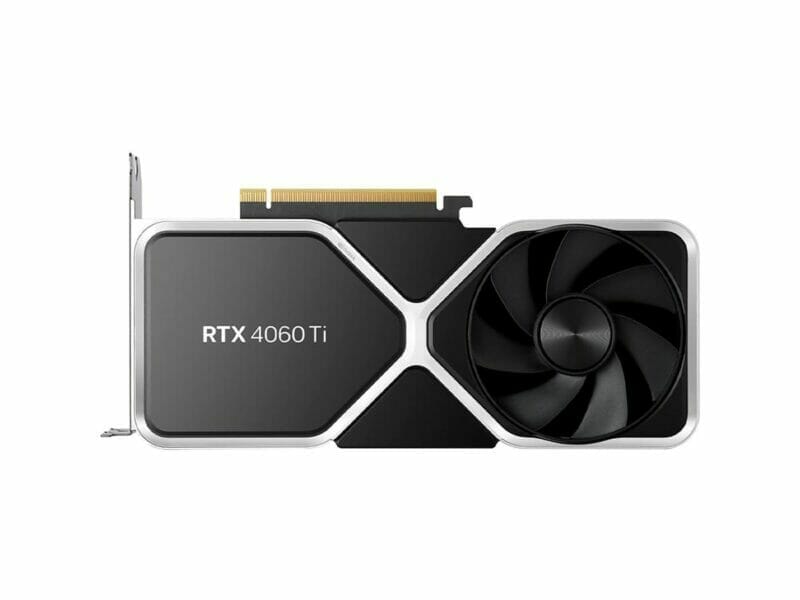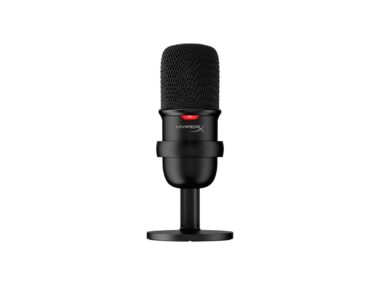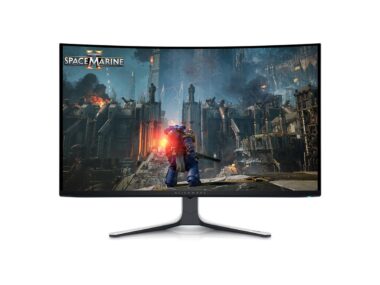Table of Contents
Key Features of NVIDIA GeForce RTX 4060 Ti 8GB
The NVIDIA GeForce RTX 4060 Ti 8GB is a mid-range gaming graphics card introduced as part of NVIDIA’s Ada Lovelace architecture. Offering fast gaming, streaming, and creative capabilities, it includes advanced technologies such as ray tracing, DLSS 3, and Reflex. These features provide immersive gaming experiences that promote realistic graphics and low latency.
The architecture also includes new streaming multiprocessors, fourth-generation Tensor Cores, and third-generation RT Cores. These enhancements result in better performance, power efficiency, and improved ray tracing capabilities compared to previous models. To enhance creative workflows, NVIDIA has integrated AI assistance through the NVIDIA Studio suite which includes tools like NVIDIA Encoder, NVIDIA Broadcast, NVIDIA Omniverse, and NVIDIA Canvas.
Despite these features, it’s important to note that the GeForce RTX 4060 Ti 8GB does not significantly surpass the performance of its predecessor, the RTX 3060 Ti. It falls short in terms of raw performance due to reduced core counts and modifications to the memory subsystem, and the 8GB of VRAM might struggle with demanding games even at 1080p resolution.
Despite these limitations, the NVIDIA GeForce RTX 4060 Ti does possess other distinct features. These include RTX Video Super Resolution, NVIDIA G-SYNC, virtual reality support, and Resizable BAR. The card requires a 2-slot card space measuring 9.6″ x 3.9″ and additional room for power cables. Thus, users need to ensure power supply compatibility and provide proper clearance in the case before installation.
In terms of its physical attributes, the GeForce RTX 4060 Ti features the AD106 chip with advanced features, including Tensor cores and NVENC/NVDEC units. Although the 8GB VRAM may be insufficient for large language models, a 16GB version of the card might be more suitable for AI researchers.
Given its price of $399, the GeForce RTX 4060 Ti 8GB does offer mainstream gaming performance. However, users looking for higher performance or needing to run demanding applications are recommended to consider the higher-end RTX 4070 or the 16GB variant of the RTX 4060 Ti.
Specification
| Manufacturer | NVIDIA |
| GPU Series | GeForce RTX 40 series |
| GPU Model | RTX 4060 Ti |
| GPU Architecture | Ada Lovelace |
| Graphics Processor (GP) | AD106 |
| Memory | 8 GB GDDR6 |
| Memory Interface | 128-bit |
| Base Clock Speed | 2310 MHz |
| Boost Clock Speed | Up to 2535 MHz |
| Memory Speed | 2250 MHz |
| Shading Units | 4352 |
| Texture Mapping Units (TMUs) | 136 |
| Render Output Units (ROPs) | 48 |
| Tensor Cores | 136 |
| Ray Tracing Acceleration Cores | 34 |
| Maximum Power Draw | 160 W |
| Power Connectors | 16-pin connector |
| Display Outputs | HDMI 2.1, DisplayPort 1.4a |
| Cooling | Dual-slot cooling solution |
| Dimensions | 240 mm x 111 mm x 40 mm |
| DirectX Support | DirectX 12 Ultimate |
| Variable-Rate Shading (VRS) | Yes |
| Other Features | Ray Tracing, DLSS 3, NVIDIA Reflex, NVIDIA Studio, Game Ready Drivers, GeForce Experience, Live Streaming Optimization, AI-powered Broadcasting, Collaboration through Omniverse, AI-assisted Painting with Canvas |
Performance
The NVIDIA GeForce RTX 4060 Ti 8GB is a mid-range graphics card that offers improved performance and enhanced features compared to its predecessor, the RTX 3060 Ti. With its reasonable pricing of $399, it provides a suitable upgrade option for users with older GPUs, though it does not measure up in gaming performance when compared to higher-tier cards like the RTX 3070.
In daily usage, the GeForce RTX 4060 Ti 8GB delivers decent gaming performance at 1080p and 1440p resolutions. Thanks to its Ada Lovelace architecture, it supports ray tracing, DLSS 3, and NVIDIA Studio, which enhance the overall gaming experience and creative work respectively. The architecture also provides realistic graphics and AI-accelerated performance, while NVIDIA Reflex technology ensures low latency.
Despite these advancements, the GeForce RTX 4060 Ti 8GB does have some limitations. Its performance is constrained by its 128-bit memory bus and the 8GB VRAM capacity. Although DLSS 3 Frame Generation does improve performance, it also increases latency while boosting FPS, which might affect gameplay in some scenarios. The 8GB VRAM and narrow memory interface limit the long-term utility of the card, particularly for more demanding applications and games that require more memory. This limitation may lead users to consider the 16GB version of the GeForce RTX 4060 Ti for future-proofing purposes.
Efficiency-wise, the card’s lower power draw makes it an attractive option, and it offers excellent performance per watt. However, potential buyers should consider their power supply and case requirements before installation, as the card requires two unused expansion slots and proper clearance for its dimensions.
In conclusion, the NVIDIA GeForce RTX 4060 Ti 8GB provides satisfactory performance for day-to-day usage, especially at its price point. While it may not be a top-of-the-line next-gen graphics card, it offers a compelling balance between performance and cost, making it a practical choice for mainstream users.
Pros
- Mainstream Pricing: The RTX 4060 Ti 8GB offers an attractive price point at $399, making it accessible to a wide range of users.
- Enhanced Performance: The card slightly outperforms its predecessor, the RTX 3060 Ti, particularly in 1080p gaming.
- Efficiency: The RTX 4060 Ti 8GB is energy-efficient and uses less power compared to some other models.
- Feature Set: The graphics card supports features like ray tracing, AI features, and DLSS 3, enhancing the overall gaming and content creation experience.
Cons
- Limited Performance: The RTX 4060 Ti 8GB is limited by its narrower 128-bit memory bus and 8GB VRAM, which can result in an underwhelming performance in some games and resolutions.
- Increased Latency: DLSS 3 can increase latency while inflating FPS, which might affect gameplay in some scenarios.
- Comparatively Subpar Value: Given its performance level, the card’s performance-to-price ratio has been criticized as less attractive compared to some alternatives, such as the Radeon RX 6700 XT.
- Inconsistent Performance Improvements: While the RTX 4060 Ti 8GB does offer improved performance over the RTX 3060 Ti, these improvements are not consistent across all games and resolutions.
Conclusion
The NVIDIA RTX 4060 Ti 8GB is a mid-range graphics card that offers a blend of both positives and negatives, depending on the specific context and use case it is evaluated. While it makes certain improvements over its predecessor, the RTX 3060 Ti, these improvements can be characterized as incremental rather than revolutionary.
One of the significant advantages of the RTX 4060 Ti is the inclusion of DLSS 3 and Frame Generation. These features can enhance performance in certain gaming contexts, particularly in games that natively support DLSS. This technology can be seen as a form of “future-proofing,” allowing games to run at higher visual settings without requiring a more powerful (and costly) graphics card.
Nevertheless, the RTX 4060 Ti does encounter limitations in certain areas. The most noticeable of these is its relatively narrow memory interface and the decision to limit VRAM to 8GB. For casual and most mainstream gaming, this VRAM capacity will likely suffice, particularly when primarily playing at 1080p. However, as game requirements continue to increase, and as resolutions above 1080p become more commonplace, this VRAM limit could indeed start to pose constraints on performance.
The RTX 4060 Ti also exhibits the continued focus of NVIDIA on AI-related enhancements. Features such as the Ada Lovelace architecture, the 4th-gen Tensor cores, 3rd-gen RT cores, and improved NVENC/NVDEC units showcase NVIDIA’s push towards using AI to improve graphics card performance. However, the benefits of these enhancements might be more noticeable for AI researchers or users running specific AI workloads, rather than mainstream gamers.
Overall, while the NVIDIA RTX 4060 Ti 8GB offers specific advantages in terms of AI features and certain gaming contexts, it may fall short of delivering a true next-gen experience due to its VRAM limitations and the incremental nature of its performance improvements over the previous generation.
FAQs
-
What is the NVIDIA GeForce RTX 4060 Ti 8GB?
The NVIDIA GeForce RTX 4060 Ti 8GB is a part of the GeForce RTX 4060 family of graphics cards. It was introduced as a premium offering within this series.
-
When was the GeForce RTX 4060 Ti announced and when did it become available?
The GeForce RTX 4060 Ti was announced on May 18, 2023, and its availability began on May 24, 2023.
-
Why does the RTX 4060 Ti have a 16GB option when it offers more graphics memory than the RTX 4070 & 4070 Ti which only have 12GB?
Sometimes, certain GPU models can have variations in their graphics memory offerings based on various factors, including marketing decisions, demand, and technological advances. This can lead to a situation where the RTX 4060 Ti has an option with more graphics memory than other superior models.





